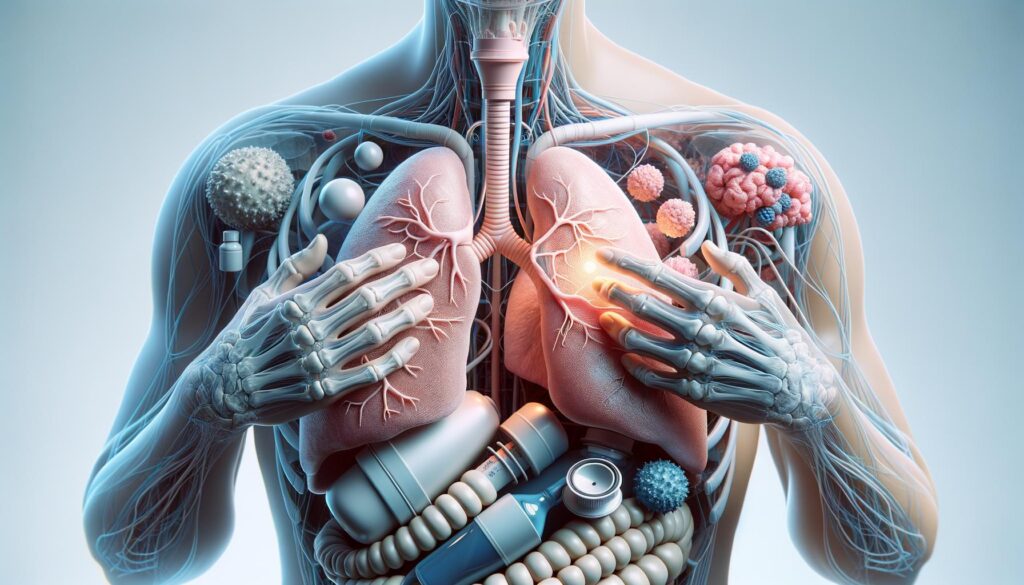Navigating Lung Cancer Treatment Options

Understanding Lung Cancer
Lung cancer remains a significant health challenge, known for being one of the most commonly diagnosed cancers globally. It categorizes into two primary types: non-small cell lung cancer (NSCLC) and small cell lung cancer (SCLC). NSCLC accounts for the majority of cases and is typically less aggressive than SCLC. Early detection is crucial in managing lung cancer effectively, as it allows for a broader range of treatment options and often results in better outcomes.
The risk factors for lung cancer extend beyond smoking, although it remains the leading cause. Other contributory factors include:
- Exposure to radon gas
- Asbestos exposure
- Genetic predispositions
- Environmental pollutants
Regular screening and awareness can potentially reduce these risk factors significantly.
Traditional Treatment Approaches
Conventional treatment strategies primarily focus on surgery, radiation therapy, and chemotherapy. These approaches have been the backbone of lung cancer treatment for many years.
Surgery is often the first line of treatment for early-stage NSCLC, where the tumor can be removed entirely. Not all patients are candidates for surgery, particularly those with SCLC due to its rapid spread.
Radiation therapy is another pivotal treatment, particularly beneficial for patients who cannot undergo surgery. It uses high-energy rays to target and kill cancer cells, often combined with chemotherapy to enhance effectiveness.
— Chemotherapy involves using drugs to kill rapidly dividing cancer cells. It is particularly useful in treating advanced lung cancer, either as a standalone option or in conjunction with other treatments. The challenge with chemotherapy lies in its side effects, impacting both cancerous and healthy cells.
Advances in Targeted Therapy
Targeted therapy marks a significant shift in how lung cancer is treated, offering personalized medicine tailored to the genetic makeup of a patient’s tumor. Unlike traditional chemotherapy, targeted therapy aims at specific genes or proteins that contribute to cancer growth and progression.
Some of the targeted therapy drugs block essential proteins, halting the proliferation of cancer cells or even inducing cell death. These medications are often more precise in their action, offering a treatment option with potentially fewer side effects:
- EGFR inhibitors
- ALK inhibitors
- ROS1 inhibitors
These drugs are particularly beneficial for patients with specific genetic mutations and can dramatically improve outcomes when appropriately matched.
The Role of Immunotherapy
Immunotherapy is a groundbreaking treatment that leverages the body’s immune system to fight lung cancer. It works by stimulating the natural defenses of the body to target and destroy cancer cells more effectively.
Several immunotherapy drugs have been developed and approved for lung cancer treatment, focusing on checkpoint inhibitors that unmask cancer cells to the immune system. Examples include:
- PD-1 inhibitors
- PD-L1 inhibitors
These treatments have been particularly transformative for NSCLC patients, offering an option where traditional therapies are ineffective.
Combining Treatments for Better Outcomes
Combining multiple treatment modalities often leads to enhanced outcomes and increased chances of survival, especially in the case of advanced lung cancer. Oncologists typically design personalized treatment plans that integrate surgery, chemotherapy, targeted therapy, and immunotherapy to maximize efficacy.
Collaboration across disciplines is crucial in creating comprehensive treatment approaches, guiding patients through each stage of their journey. Regular monitoring and adjustments to therapy plans are imperative to adapt more effectively to the disease’s progression or regression.
Patient support services, including psychosocial support and rehabilitation programs, play a vital role in addressing the physical and emotional burdens of lung cancer treatment.
Conclusion
Advancements in lung cancer treatment have opened new pathways for managing and potentially overcoming this challenging disease. While traditional methods remain essential components of treatment, the integration of targeted therapies and immunotherapy signifies a new era of personalized medicine. By tailoring treatments to the individual needs of patients and leveraging innovative therapies, the chance of achieving prolonged survival and improved quality of life increases significantly. Patients are encouraged to engage actively with their healthcare providers to explore and understand all available treatment options that align with their specific condition.
